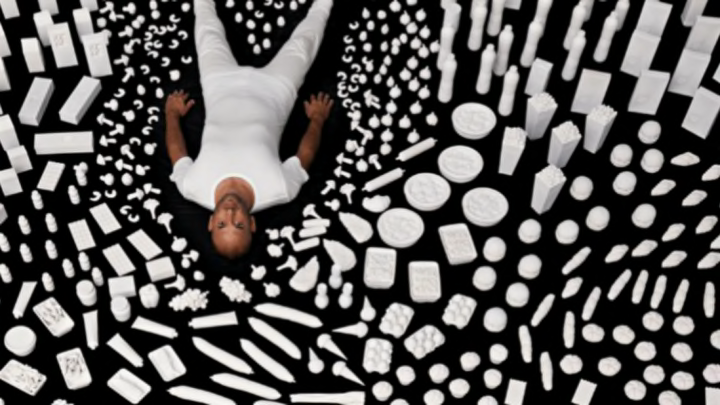Lots of people keep food diaries or log their calories through an app, but few take it to the level that Israeli-Dutch artist Itamar Gilboa did. Rather than just tracking what he ate, Gilboa sculpted each item, resulting in 150 types of products and 8000 individual pieces which he presented as the Food Chain Project.
The project was prompted by Gilboa's move from Tel Aviv to Amsterdam. After noticing how his new location affected his diet—Danish staples were replacing classic Mediterranean cuisine—he started thinking about his intake and the impact of his nutritional decisions. Over the next year, he painstakingly noted everything he ate, leaving him with a massive amount of data. While examining his own dietary habits, he became fascinated with food as a global issue and decided to create a visual manifestation of his own food intake to prompt others to think about the consequences and scope of theirs.
Gilboa spent the next three years creating precise plaster replicas of each individual item, leaving him with a collection of pure white, life-size sculptures of 365 days' worth of food and drink. Each item is available for sale, and 70 percent of the proceeds go to Fair Food International and Youth Food Movement. Gilboa explained that by donating profits to two food-supplying non-governmental organizations, he has created a cycle. "What I consumed is turned into art, which, when sold, becomes food again, thereby creating a food chain,” said Gilboa to the Huffington Post.


A preview of the exhibit was displayed in 2013 for Dutch Design Week in Eindhoven, and in 2014, Gilboa presented the complete collection in the form of a pop-up supermarket at the Nieuw Dakota, an art museum in Amsterdam.
Most recently, the traveling pop-up appeared at the 2015 Amsterdam Art Fair.

Now think about your personal supermarket. What would it look like?
All article photos are courtesy of Food Chain Project
[h/t Wired]
